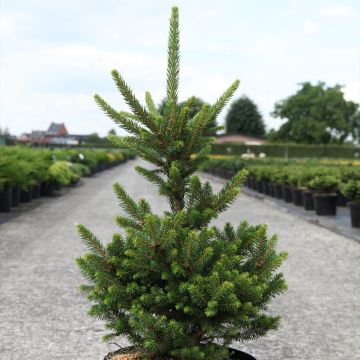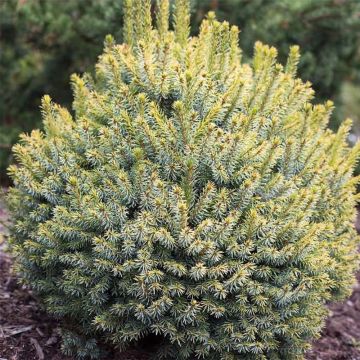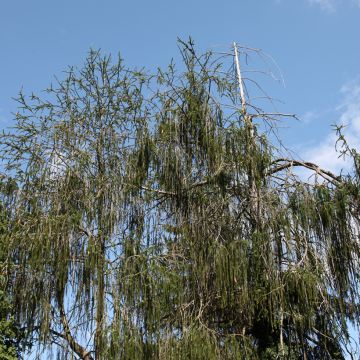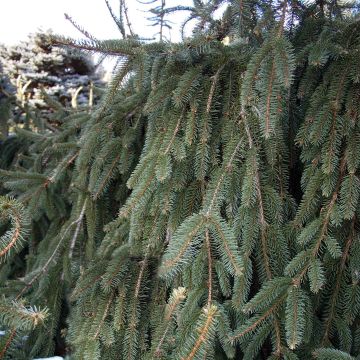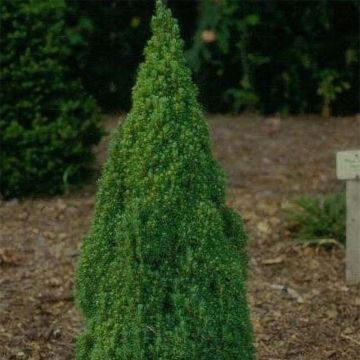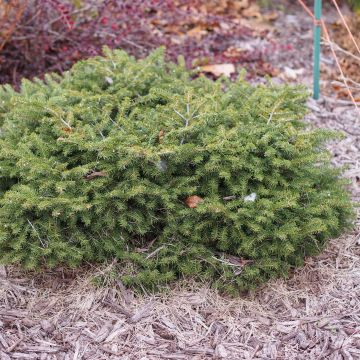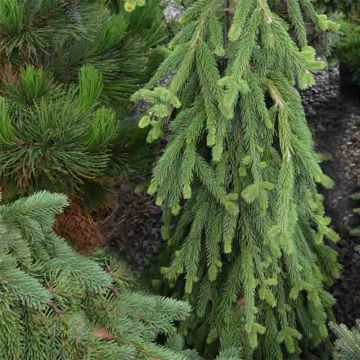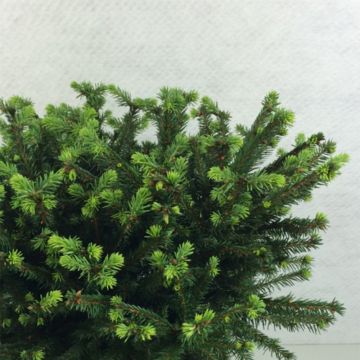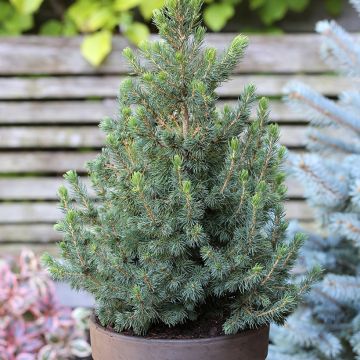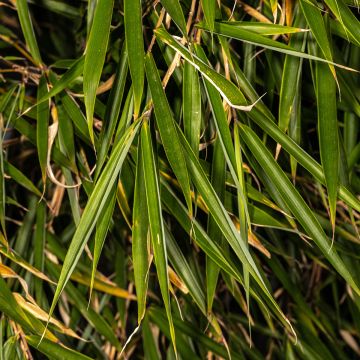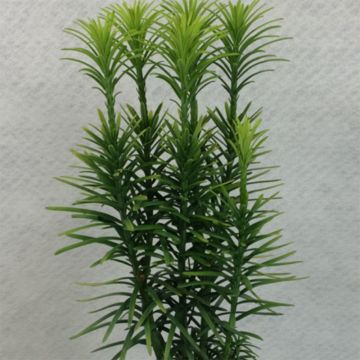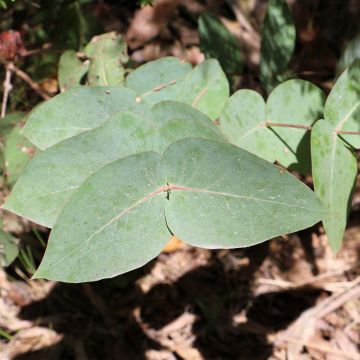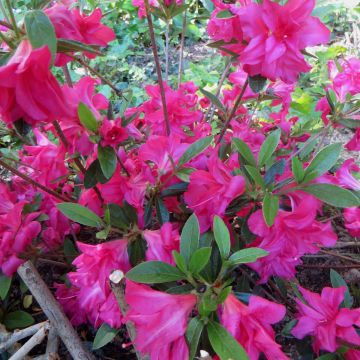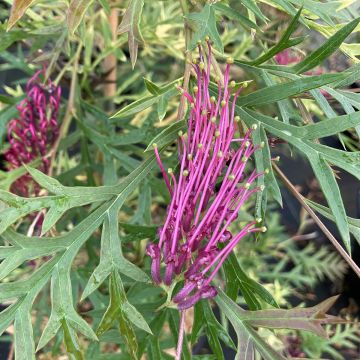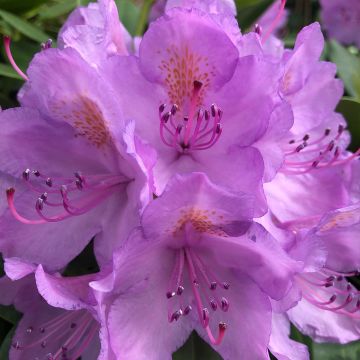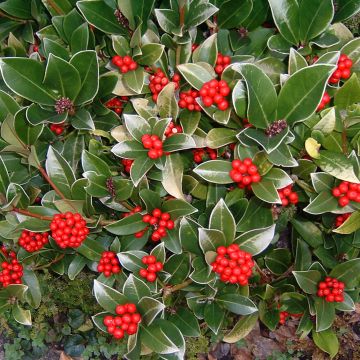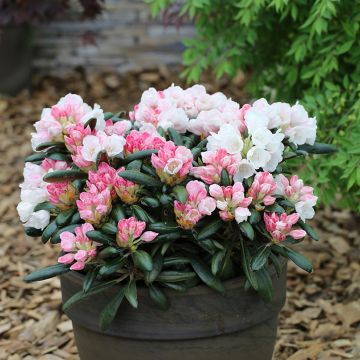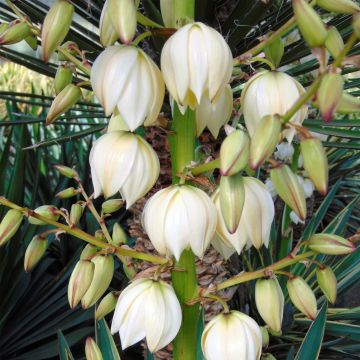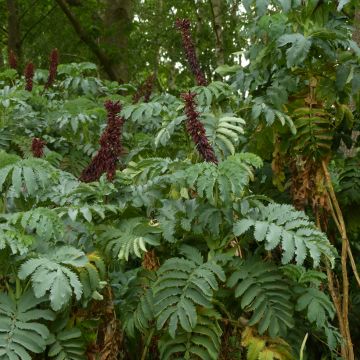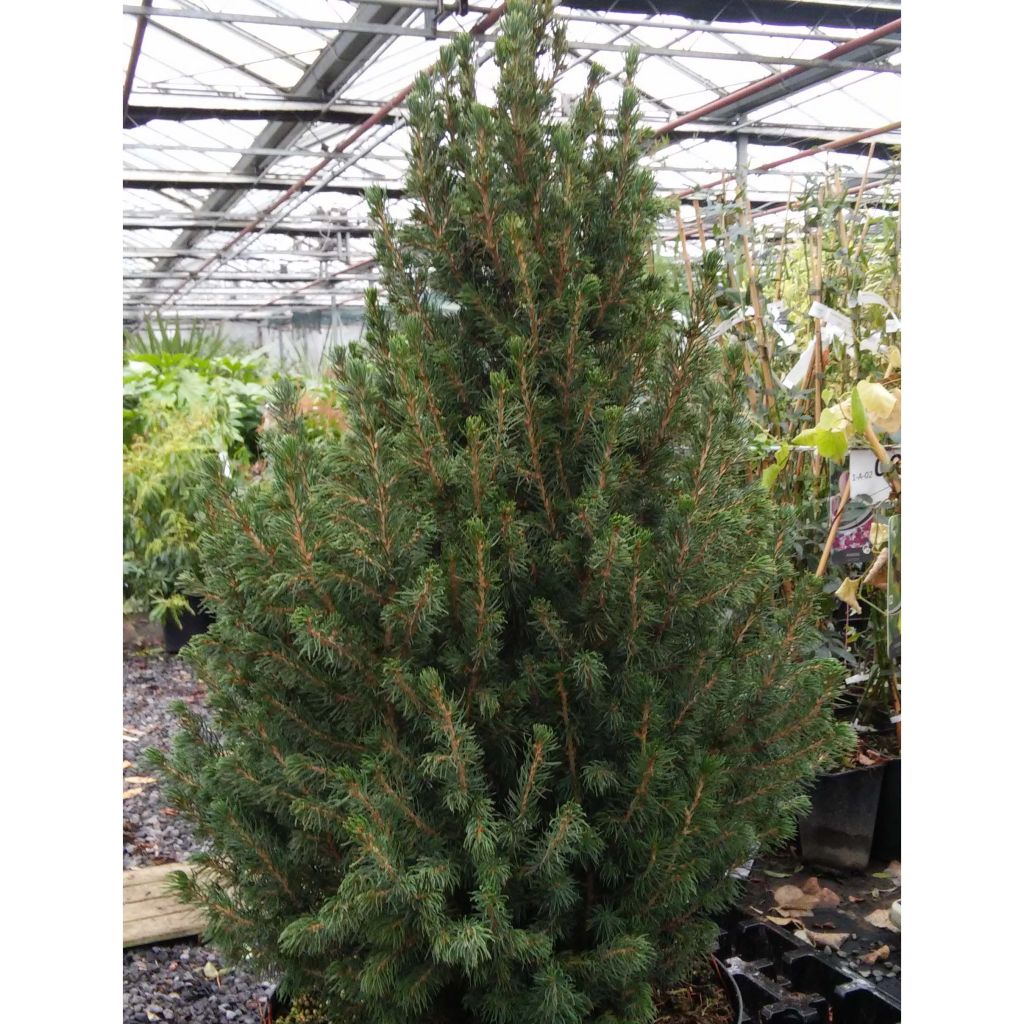

Picea glauca December - White Spruce
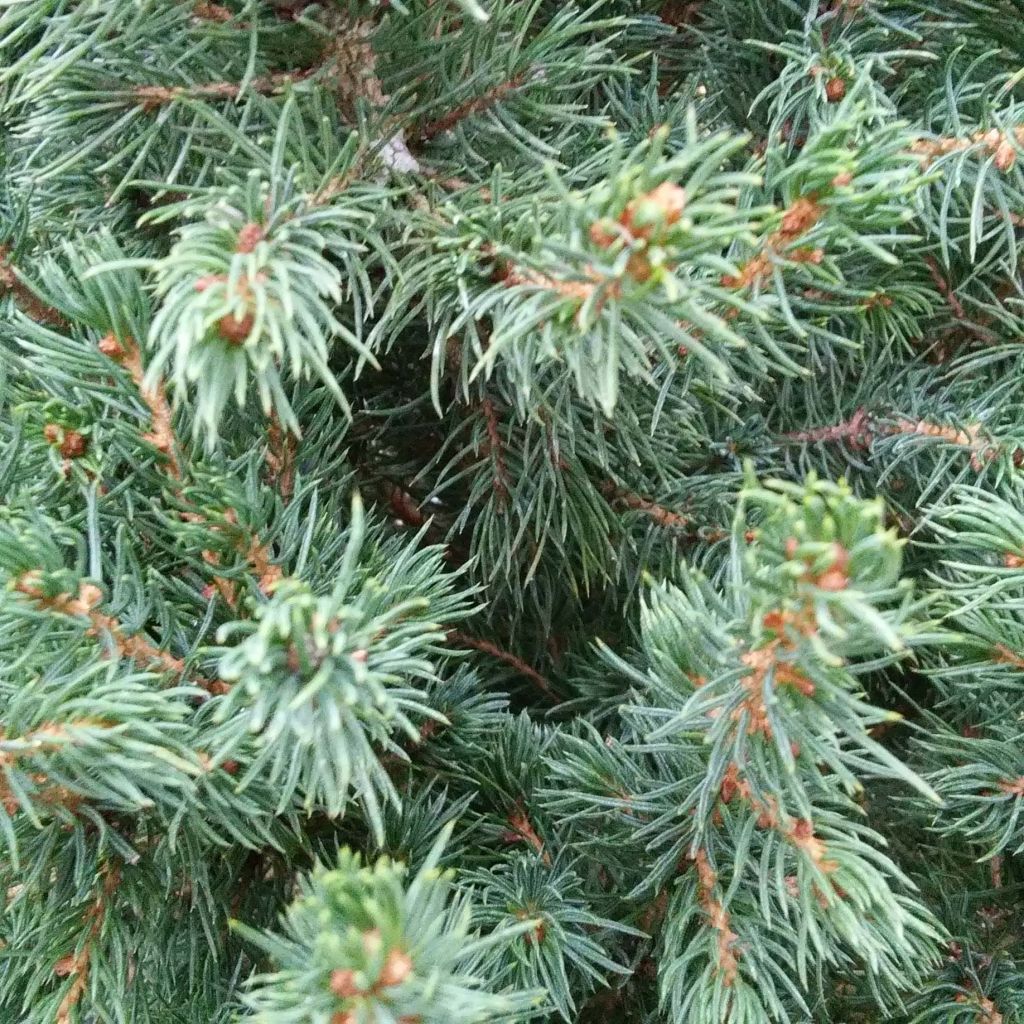

Picea glauca December - White Spruce
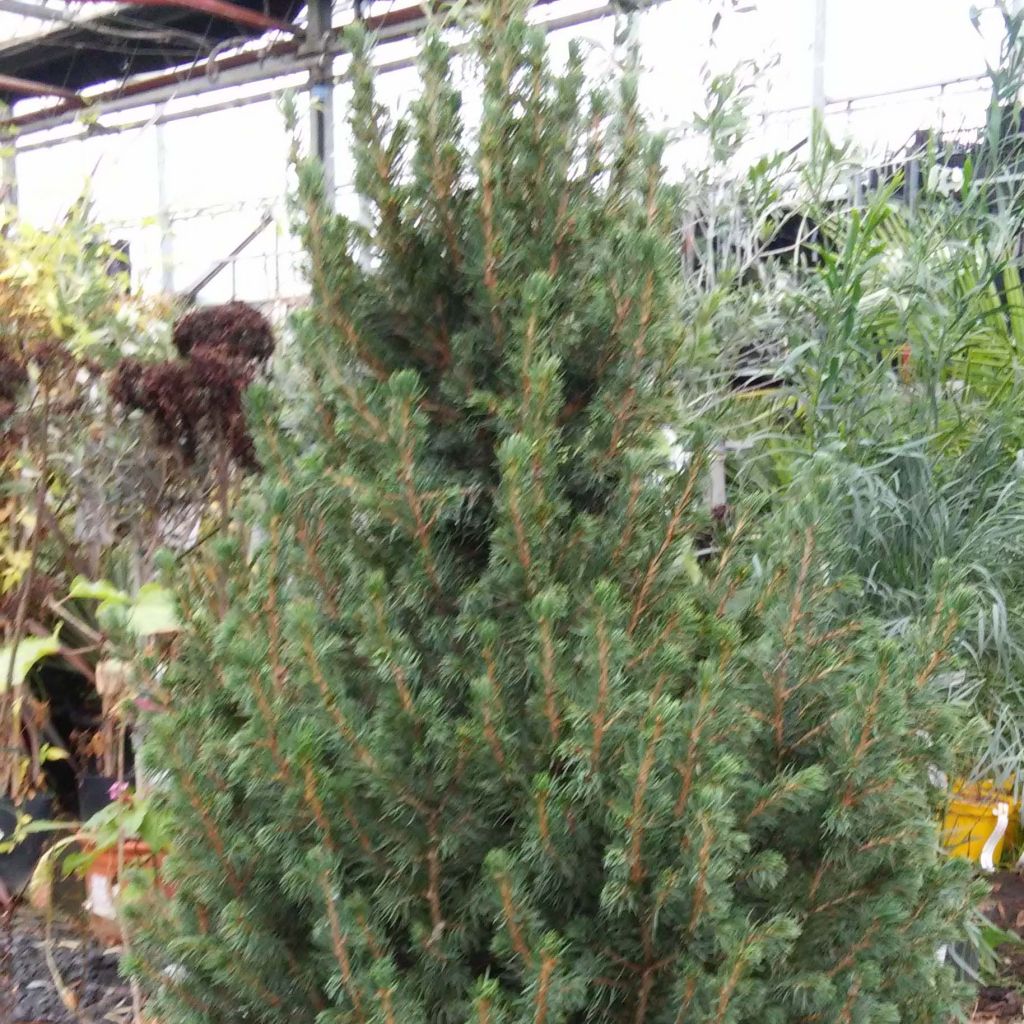

Picea glauca December - White Spruce
Picea glauca December - White Spruce
Picea glauca December
White Spruce, Canadian Spruce, Skunk Spruce, Cat Spruce, Black Hills Spruce, Western White Spruce, Alberta White Spruce, Porsild Spruce
Exactly what I was looking for. A mini Christmas tree. On both, you lose a few thorns. I think it didn't like the transportation. It was watered and young plant right away, and I'll give it some time to be able to talk about the habit in the long term. Fast and careful delivery.
Joëlle R., 12/04/2019
This item cannot be shipped to the selected country
Delivery charge from €5.90
More information
Schedule delivery date,
and select date in basket
This plant carries a 24 months recovery warranty
More information
We guarantee the quality of our plants for a full growing cycle, and will replace at our expense any plant that fails to recover under normal climatic and planting conditions.
From €5.90 for pickup delivery and €6.90 for home delivery
Express home delivery from €8.90.
Does this plant fit my garden?
Set up your Plantfit profile →
Description
Picea glauca 'December' is a beautiful improvement of 'Conica', the most well-known and widely planted of the white spruces. With slightly faster growth, this conifer has a slightly more slender habit, perfectly conical, and naturally dense and regular vegetation, without any pruning necessary. In addition to this neat appearance, it has beautiful foliage, neither truly green nor truly grey, with a beautiful muted shade animated by discreet silvery or bluish reflections in winter. 'December' will also be a festive addition to your interior for end-of-year celebrations, before returning to the garden. It is perfect for adding an elegant and graphic touch to the landscape, allowing for endless play with colours, vertical and horizontal lines, textures...
Picea glauca, also known as White Spruce, White Epicéa or Glaucous Epicéa, is an evergreen conifer belonging to the Pinaceae family. It is native to Canada. In its natural environment, it grows slowly, with a habit that can vary depending on its habitat, but usually conical or pyramidal with a broad base. This tree can reach a height of 25 metres (82 feet). This species is traditionally used for papermaking. It can live for many years (200 years or more).
The recent variety 'December', derived from this species, is a dwarf form and particularly elegant, with a compact, narrow, conical and upright habit. Slowly, after 10 to 15 years of cultivation, it will reach a height of 1.80 metres and a width of 80cm, sometimes more in cool and humid climates. Its annual growth is approximately 6 to 10cm (2 to 4in) per year. It produces short, ascending and very tightly packed branches, arranged in hierarchical brushes, covered with short and quadrangular needles, very sharp and aromatic (with a resinous smell). They are covered with a white wax. Its young spring shoots are of a tender green, then its foliage takes on a slightly muted shade, uniformly medium green-gray, variable depending on the plants. In winter, due to the cold, the needles take on a bluish appearance. The root system of white spruces is shallow, highly branched, and trailing, making them difficult to transplant when mature and particularly sensitive to wind. On the other hand, a container-grown plant will quickly adapt to open ground.
The 'December' White Spruce, with its perfect habit, reduced size, and ability to temporarily tolerate the atmosphere of our interiors, is perfect for replacing the traditional Christmas tree (Abies nordmanniana). It is also a low-maintenance, easy-to-grow plant, perfect for rock gardens, terraces, or for solitary planting. It thrives in many situations, in various climates, as long as the soil is well-drained, deep, and not too chalky. This plant pairs well with large stones, geometric lines, and masonry works. It can be associated with prostrate conifers (Juniperus horizontalis 'Blue Chip', J. squamata 'Blue Star'), globose (Picea glauca 'Alberta Globe'), columnar or upright. The graphic qualities of conifers naturally stand out in a contemporary garden, which highlights shapes, silhouettes, and textures rather than the dance of blooms. These plants, with their reassuring permanence, structure a border, mark pathways, or the corner of a terrace. They pair well with heathers or persistent ground cover plants such as prostrate Euonymus, Cerastiums, certain Cotoneasters, as well as shrubs with white flowers such as Exochorda or mock orange. The key is to play with volumes and colours!
Report an error about the product description
Picea glauca December - White Spruce in pictures
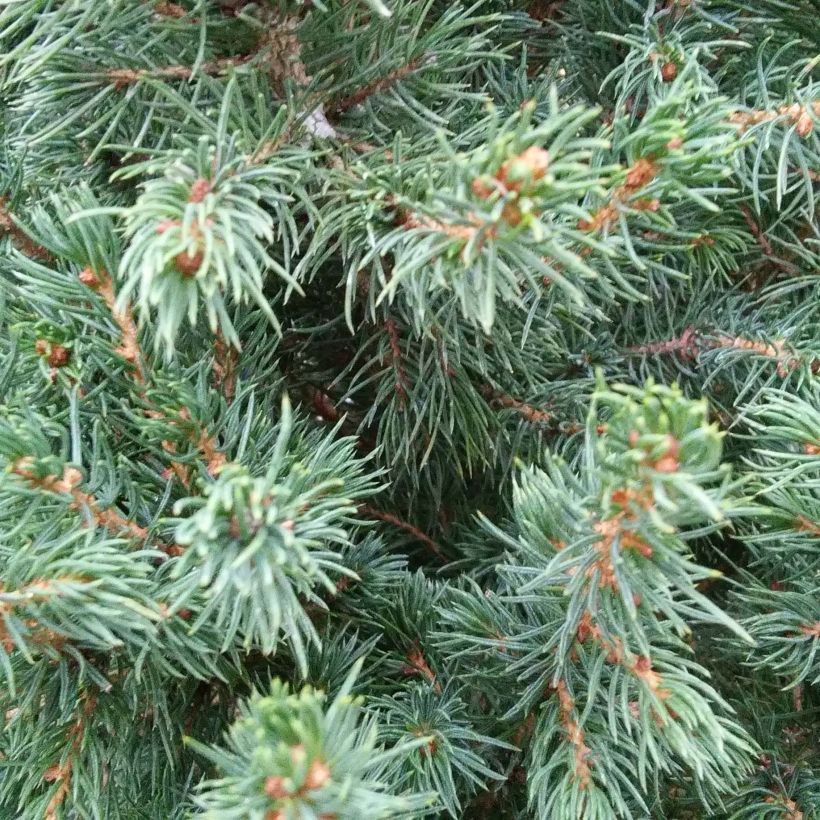

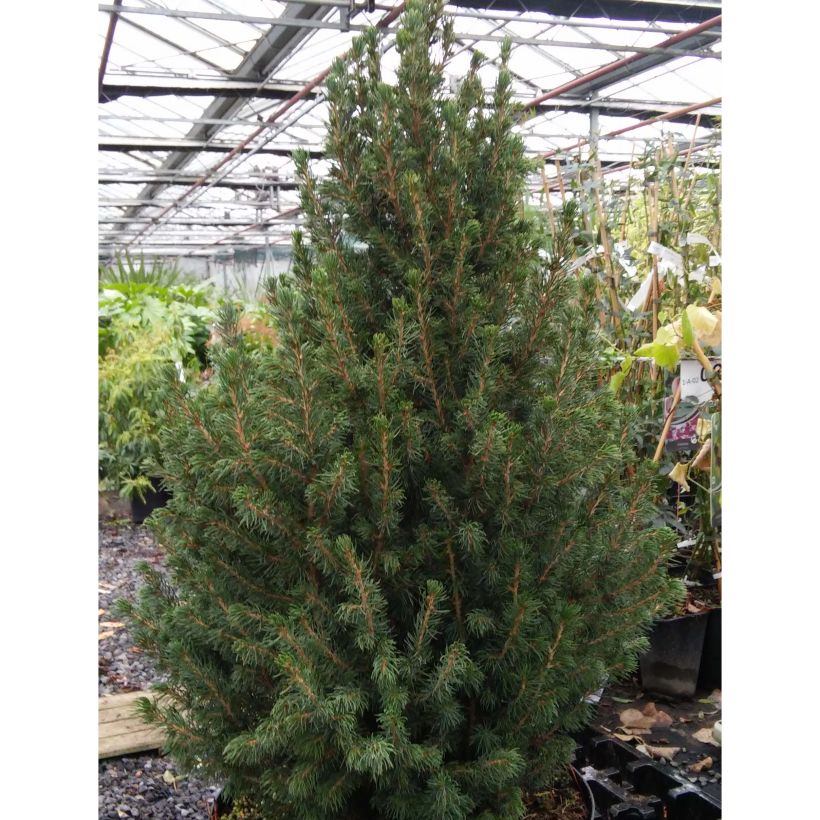

Plant habit
Foliage
Botanical data
Picea
glauca
December
Pinaceae
White Spruce, Canadian Spruce, Skunk Spruce, Cat Spruce, Black Hills Spruce, Western White Spruce, Alberta White Spruce, Porsild Spruce
Cultivar or hybrid
Other Picea
Planting and care
Picea glauca 'December' should be planted from September to November and from February to June in deep, well-drained, light, preferably neutral, occasionally dry soil. A sandy, loamy or rocky soil that is not too chalky will be perfect. Choose a sunny or partially shaded spot, sheltered from prevailing winds. In excessively sunny and dry conditions, it will be more prone to attacks from red spiders. Soak the root balls well before planting. Add organic amendment to the soil at planting and water generously in the first few years, and during prolonged droughts. Every year in April, apply a special conifer fertilizer and cultivate the soil in summer. However, this extremely hardy conifer fears heavy, waterlogged soils in winter. Pruning is not necessary, on the contrary, as this pyramid-shaped plant expresses its full potential when allowed to grow freely.
Planting period
Intended location
Care
-
, onOrder confirmed
Reply from on Promesse de fleurs
Evergreen shrubs
Haven't found what you were looking for?
Hardiness is the lowest winter temperature a plant can endure without suffering serious damage or even dying. However, hardiness is affected by location (a sheltered area, such as a patio), protection (winter cover) and soil type (hardiness is improved by well-drained soil).

Photo Sharing Terms & Conditions
In order to encourage gardeners to interact and share their experiences, Promesse de fleurs offers various media enabling content to be uploaded onto its Site - in particular via the ‘Photo sharing’ module.
The User agrees to refrain from:
- Posting any content that is illegal, prejudicial, insulting, racist, inciteful to hatred, revisionist, contrary to public decency, that infringes on privacy or on the privacy rights of third parties, in particular the publicity rights of persons and goods, intellectual property rights, or the right to privacy.
- Submitting content on behalf of a third party;
- Impersonate the identity of a third party and/or publish any personal information about a third party;
In general, the User undertakes to refrain from any unethical behaviour.
All Content (in particular text, comments, files, images, photos, videos, creative works, etc.), which may be subject to property or intellectual property rights, image or other private rights, shall remain the property of the User, subject to the limited rights granted by the terms of the licence granted by Promesse de fleurs as stated below. Users are at liberty to publish or not to publish such Content on the Site, notably via the ‘Photo Sharing’ facility, and accept that this Content shall be made public and freely accessible, notably on the Internet.
Users further acknowledge, undertake to have ,and guarantee that they hold all necessary rights and permissions to publish such material on the Site, in particular with regard to the legislation in force pertaining to any privacy, property, intellectual property, image, or contractual rights, or rights of any other nature. By publishing such Content on the Site, Users acknowledge accepting full liability as publishers of the Content within the meaning of the law, and grant Promesse de fleurs, free of charge, an inclusive, worldwide licence for the said Content for the entire duration of its publication, including all reproduction, representation, up/downloading, displaying, performing, transmission, and storage rights.
Users also grant permission for their name to be linked to the Content and accept that this link may not always be made available.
By engaging in posting material, Users consent to their Content becoming automatically accessible on the Internet, in particular on other sites and/or blogs and/or web pages of the Promesse de fleurs site, including in particular social pages and the Promesse de fleurs catalogue.
Users may secure the removal of entrusted content free of charge by issuing a simple request via our contact form.
The flowering period indicated on our website applies to countries and regions located in USDA zone 8 (France, the United Kingdom, Ireland, the Netherlands, etc.)
It will vary according to where you live:
- In zones 9 to 10 (Italy, Spain, Greece, etc.), flowering will occur about 2 to 4 weeks earlier.
- In zones 6 to 7 (Germany, Poland, Slovenia, and lower mountainous regions), flowering will be delayed by 2 to 3 weeks.
- In zone 5 (Central Europe, Scandinavia), blooming will be delayed by 3 to 5 weeks.
In temperate climates, pruning of spring-flowering shrubs (forsythia, spireas, etc.) should be done just after flowering.
Pruning of summer-flowering shrubs (Indian Lilac, Perovskia, etc.) can be done in winter or spring.
In cold regions as well as with frost-sensitive plants, avoid pruning too early when severe frosts may still occur.
The planting period indicated on our website applies to countries and regions located in USDA zone 8 (France, United Kingdom, Ireland, Netherlands).
It will vary according to where you live:
- In Mediterranean zones (Marseille, Madrid, Milan, etc.), autumn and winter are the best planting periods.
- In continental zones (Strasbourg, Munich, Vienna, etc.), delay planting by 2 to 3 weeks in spring and bring it forward by 2 to 4 weeks in autumn.
- In mountainous regions (the Alps, Pyrenees, Carpathians, etc.), it is best to plant in late spring (May-June) or late summer (August-September).
The harvesting period indicated on our website applies to countries and regions in USDA zone 8 (France, England, Ireland, the Netherlands).
In colder areas (Scandinavia, Poland, Austria...) fruit and vegetable harvests are likely to be delayed by 3-4 weeks.
In warmer areas (Italy, Spain, Greece, etc.), harvesting will probably take place earlier, depending on weather conditions.
The sowing periods indicated on our website apply to countries and regions within USDA Zone 8 (France, UK, Ireland, Netherlands).
In colder areas (Scandinavia, Poland, Austria...), delay any outdoor sowing by 3-4 weeks, or sow under glass.
In warmer climes (Italy, Spain, Greece, etc.), bring outdoor sowing forward by a few weeks.

































